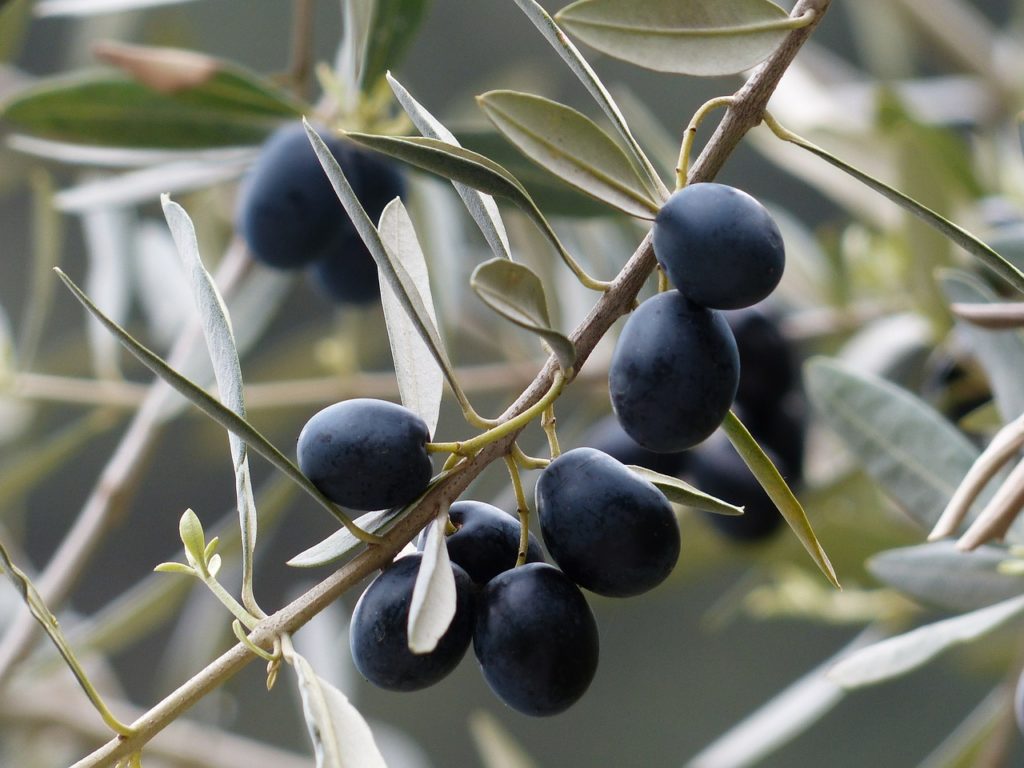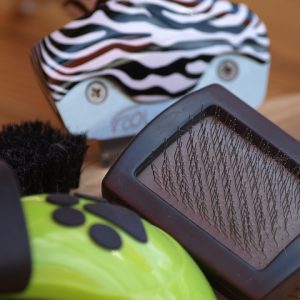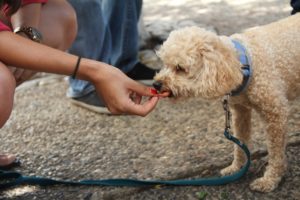Is there anything quite as versatile as the olive? Except for desserts, they work with everything! You can add them to salads (of any kind). They work their way onto pizzas. Tapenade isn’t complete without an olive selection. And you can’t go into a Mediterranean restaurant without seeing olives included in the dishes. We love them! We’ll even snack on raw olives. And you’ve probably considered offering one to a curious pup. But can dogs eat olives? It just so happens they can! Those little black and green delights are safe for canine consumption – as long as you follow a few key guidelines.
Olives
Surprise! Olea europaea is a fruit! (Shocking, right?) The little plants blossom from flowers on trees. And they’re amazing. The first olive trees showed up in Asia SIX THOUSAND years ago! Botanists consider it the oldest cultivated tree – and one of the oldest trees. There’s an olive tree on Crete that’s over THREE THOUSAND years old. Today, you’ll find over 2,000 different varieties of olive. But everyone knows them as either green or black.
What’s the difference? Green olives aren’t quite ripe. They’re picked from the tree before they finish maturing. Black olives, on the other hand, are fully ripe. And while we THINK we eat the fruit raw, that’s not the truth. If you ate a raw olive, you’d find the taste horribly bitter. Olives undergo a curing process to turn them into the delectable treats we savor.
The tender fruits are small and mighty when it comes to health. They’re sugar-free (unusual in a fruit), and loaded with nutrients. A 1-ounce serving of ripe olives contains:
- Calories: 32.2
- Protein: 0.2g
- Carbohydrates: 1.8g
- Minerals:
- Calcium: 24.6mg
- Iron: 0.9mg
- Magnesium: 1.1mg
- Phosphorous: 0.8mg
- Potassium: 2.2mg
They also contain oleate. This is a monosaturated fatty acid (these are the GOOD fats, by the way). It helps reduce cholesterol while also promoting healthy skin and hair. When dogs eat olives, they get shiny coats and improved skin. It’s a little like adding olive oil to their diet – but you’re starting from the source.
Can Dogs Eat Olives?
Seeing a lineup of health benefits, you’re probably leaning forward and asking, “Can dogs eat olives?” And the answer’s yes. This fruit provides antioxidants and low cholesterol for pups. Plus, it lacks the sugar you find in other fruit snacks. However, that doesn’t mean you should load up on olives from the grocery store. While safe for dogs to eat, olives still have a few problems. They’re NOT low in fat (0.9g) or sodium, which can lead to weight gain in canines. And if you’re not careful in the TYPE of olive you pick up, you can end up rushing your dog to the vet after you provide a snack.

Precautions When Dogs Eat Olives
Olives are better than most of our guilty pleasures. They contain less sugar and fat than chocolate (which dogs can’t have, anyway). And their sodium levels don’t top those of most chips we find ourselves reaching for. They pack in important nutrients we need in our diets. But they tip the scales for canines. When dogs eat olives, they get more fat and salt than their bodies need. And if we’re not careful, we can cause our pups to choke or end up with an intestinal obstruction. Or, worse, we can end up causing them to need hospitalization. It’s important to pay attention to labels BEFORE allowing your dog an olive snack.
Sodium
That simple ounce of olives contains 71.9mg of sodium. Dogs? They need 13.3mg of sodium – A DAY. So the math starts getting out of hand pretty quickly. Too much salt when dogs eat olives can lead to dehydration or severe toxicity. If you leave a bowl of olives where your dog can reach? You could find yourself rushing to the vet with neurologic signs. The body attempts to maintain a careful balance, but if your dog can’t reach plenty of water to even out the salt, things slide out of control. You’ll see lethargy, vomiting, diarrhea, and collapse.
The type of olive matters, too. Green olives (which aren’t fully ripe) have MORE sodium than black olives. And kalamata olives tip the salt scales over green olives. Then you have canned versus pickled. Both versions multiply the sodium content in the processing. You MUST check the nutrition label and break out the calculator. Then keep the olive offerings to a minimum.
Pits
Natural olives contain pits. And they’re HARD. Even we don’t attempt to chew or swallow them. You can’t stop to explain that when dogs eat olives, though. Some dogs try to bite down on them, and they CAN crack teeth if the pits are hard enough. Other pits may lead to choking hazards in small dogs. If your dog ingests enough olive pits, they can end up with an intestinal obstruction. The stomach doesn’t have the ability to break down the pit. If you see vomiting or diarrhea after your dog eats olives, get to the vet right away. They’ll perform a radiograph and be able to see the pits blocking the works.
Additives
Olives often come mixed or stuffed with delicious additives. Sometimes these include various oils, seasonings, or garlic. You MUST read the ingredient label before sharing these mixtures with your dog. Many of the additives – such as garlic – are TOXIC to dogs. Dogs should NEVER receive olives that contain these dangerous ingredients. Even one can lead to health complications. Pimentos are safe, but you’ll rarely find pimentos as the only ingredient. ALWAYS read the label.
This goes double for olives floating around in alcoholic beverages. They’re NOT safe for canine consumption.
Safe Ways for Dogs to Eat Olives
You want your dog to get a healthy treat, but you don’t want to end up rushing to the vet as a result. And dogs CAN eat olives. You just need to make sure you offer these fruits in a reasonable manner.
PLAIN, pitted olives are safe for dogs to eat. It’s okay if you offer green or black, but keep those sodium levels in the back of your mind. You only want to make this an OCCASIONAL treat, and you need plenty of fresh water close by. And keep an eye on the expiration date of the olives you’re offering. It doesn’t take much for olives to start growing mold, and dogs are susceptible to tremorgenic mycotoxin ingestion. This seizure-like reaction results from eating mold-covered food. (Also, do YOU want to eat expired olives? Probably not)
We tried offering our Greyhound olives, but she wanted nothing to do with them. We even explained they were fruits, but she wasn’t convinced. (It was worth a try)
One Pup-peroni with Olives
Olives are impressive little fruits. They keep hearts working smoothly by lowering cholesterol. And they DON’T have any sugar to worry about. As long as you mind the sodium – and remove the pits – there’s no reason dogs can’t eat olives. You just need to keep those safety worries in the back of your mind.













No comment yet, add your voice below!